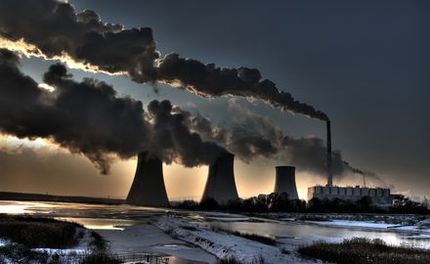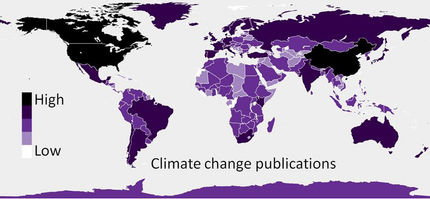Amazon's canopy chemistry is a patchwork quilt
Advertisement
In many ways, plants act as chemical factories, using energy from sunlight to produce carbon-based energy and taking nutrients from the soil in order to synthesize a wide variety of products. Carnegie scientists asked the question: How much does the portfolio of chemicals generated by plants vary, depending on the surrounding environment, and what can this tell us about how we interact with forests? The answer involved climbing into the Amazonian canopy, resulting in the discovery that the forest's chemical portfolios form a rich mosaic that varies with elevation and soil content.
Their work is published by Proceedings of the National Academy of Sciences. The team focused their work in the western Amazon, a swath of forest stretching from the Andean tree line down to the Amazonian lowlands. A region of ultra-high biodiversity, the western Amazon harbors thousands of plant species that grow at different elevations and in different soils on different geologies. Amazonian canopy trees are of particular interest because they create the habitat occupied by a tremendous diversity of other plants and animals. They are also at great risk due to climate change and other human interference such as mining, cattle ranching, and agriculture.
The team climbed to the treetops to collect and analyze foliage from 3,560 canopies across 19 forests throughout Peru. They found that canopy chemical traits are organized in a large mosaic controlled by changes in the underlying soils and by elevation. Chemical variation across co-existing species greatly exceeded the variation within each species. These and other findings reveal that different Amazonian species make up a diverse matrix of growth and survival strategies that express how these forests assembled over evolutionary time.
"We discovered that this incredible region is a patchwork mosaic of trees with chemical signatures organized into communities to maximize their growth potential given their local soils and elevation -- two geological factors they must negotiate as living organisms. Within these communities, the trees have evolved chemical portfolios that are different from one another, maybe to help each species take a place in its community -- what we call a niche," explained lead author Greg Asner.
Forest canopies are notoriously difficult to study, given the extreme difficulty of accessing them. Thousands of samples had to be collected from the upper limits of the canopy to ensure they all had equal exposure to sunlight and could thus be compared in terms of solar-driven chemical synthesis. This meant using climbing techniques to reach the outer edge of each canopy, hundreds of feet above the surface. The leaves collected by the team include the vast majority of canopy tree species found in the western Amazon.
This study is the scientific debut for Carnegie's Spectranomics project, a field and laboratory-based effort to determine the relationship between function and biological diversity of plant species in tropical forests. Carnegie houses the world's first, and largest, library of dried and cryogenically frozen samples of tropical canopy trees, along with herbarium specimen vouchers. Current holdings include millions of samples from more than 10,000 tropical trees and other lifeforms painstakingly collected from around the globe.
"It is a fascinating experience to roam the sample archive in the Spectranomics Library, whether online or with samples in hand, and to contemplate how chemically diverse tropical canopies have become." noted Dr. Robin Martin, the project's long-time coordinator. Not only do the study's findings help us better understand the tremendous diversity of the region, they also provide a new basis for understanding how climate change and human activities on the ground might affect forest function in this century.
"I view the results as a wake-up call that we are shaking up a special tropical region full of chemically unique forest communities that have undergone millions of years of evolution and biogeographic construction," Asner said "Land use and climate change are two very obvious pressures on the western Amazon. They are already threatening whole patches in a kaleidoscopic quilt of chemical diversity that underpins these ecosystems."
Other news from the department science
Most read news
More news from our other portals
See the theme worlds for related content
Topic world Synthesis
Chemical synthesis is at the heart of modern chemistry and enables the targeted production of molecules with specific properties. By combining starting materials in defined reaction conditions, chemists can create a wide range of compounds, from simple molecules to complex active ingredients.

Topic world Synthesis
Chemical synthesis is at the heart of modern chemistry and enables the targeted production of molecules with specific properties. By combining starting materials in defined reaction conditions, chemists can create a wide range of compounds, from simple molecules to complex active ingredients.
























































